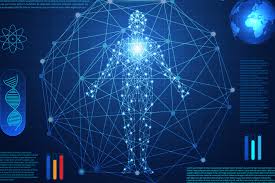Source: analyticsinsight.net
Recently, a team of researchers at MIT discovered a powerful new antibiotic using machine learning algorithms. The antibiotic is named for the AI in 2001: A Space Odyssey, halicin. It successfully wiped out numerous bacterial strains, including some of the most dangerous drug-resistant bacteria on the World Health Organization’s most wanted list. After month-long efforts and experiments, E. coli bacteria also failed to develop resistance to halicin, in stark contrast to the existing antibiotic ciprofloxacin.
As noted by the study, “Due to the rapid emergence of antibiotic-resistant bacteria, there is a growing need to discover new antibiotics. To address this challenge, we trained a deep neural network capable of predicting molecules with antibacterial activity. We performed predictions on multiple chemical libraries and discovered a molecule from the Drug Repurposing Hub—halicin—that is structurally divergent from conventional antibiotics and displays bactericidal activity against a wide phylogenetic spectrum of pathogens including Mycobacterium tuberculosis and carbapenem-resistant Enterobacteriaceae. Halicin also effectively treated Clostridioides difficile and pan-resistant Acinetobacter baumannii infections in murine models. Additionally, from a discrete set of 23 empirically tested predictions from >107 million molecules curated from the ZINC15 database, our model identified eight antibacterial compounds that are structurally distant from known antibiotics. This work highlights the utility of deep learning approaches to expand our antibiotic arsenal through the discovery of structurally distinct antibacterial molecules.”
According to a senior author on the study and computer science professor at MIT, Regina Barzilay, “In terms of antibiotic discovery, this is absolutely a first.”
Reportedly, the algorithm that discovered halicin was trained on the molecular features of 2,500 compounds. Nearly half were FDA-approved drugs, and another 800 naturally occurring. The researchers specifically tuned the algorithm to look for molecules with antibiotic properties but whose structures would differ from existing antibiotics (as halicin’s does). Using another machine learning program, they screened the results for those likely to be safe for humans.
Early study suggests halicin attacks the bacteria’s cell membranes, disrupting their ability to produce energy. Protecting the cell membrane from halicin might take more than one or two genetic mutations, which could account for its impressive ability to prevent resistance.
James Collins, an MIT professor of bioengineering and senior author said, “I think this is one of the more powerful antibiotics that has been discovered to date. It has remarkable activity against a broad range of antibiotic-resistant pathogens.”
Beyond tests in petri-dish bacterial colonies, the team also tested halicin in mice. The antibiotic cleared up infections of a strain of bacteria resistant to all known antibiotics in a day. The team plans further study in partnership with a pharmaceutical company or non-profit, and they hope to eventually prove it safe and effective for use in humans.
However, this last bit remains the trickiest step, given the cost of getting a new drug approved, but Collins hopes algorithms like theirs will help and they could dramatically reduce the cost required to get through clinical trials.
Moreover, Barzilay hopes the approach can find or even design novel antibiotics that kill bad bacteria with alacrity while sparing the good guys. In this way, a round of antibiotics would cure whatever ails people without taking out their whole gut microbiome in the process.
The discovery in itself a greater achievement yet the bigger picture implies the increasing use of machine learning and similar technologies in the long, expensive process of drug discovery. Apart from MIT researchers, other universities and industry players working in this arena are extensively deploying AI to produce a vast amount of drug-like compounds to thrive in the healthcare industry infused with new-age technologies.
Barzilay says, “There is still a question of whether machine-learning tools are really doing something intelligent in healthcare, and how we can develop them to be workhorses in the pharmaceutical industry. This shows how far you can adapt to this tool.”
